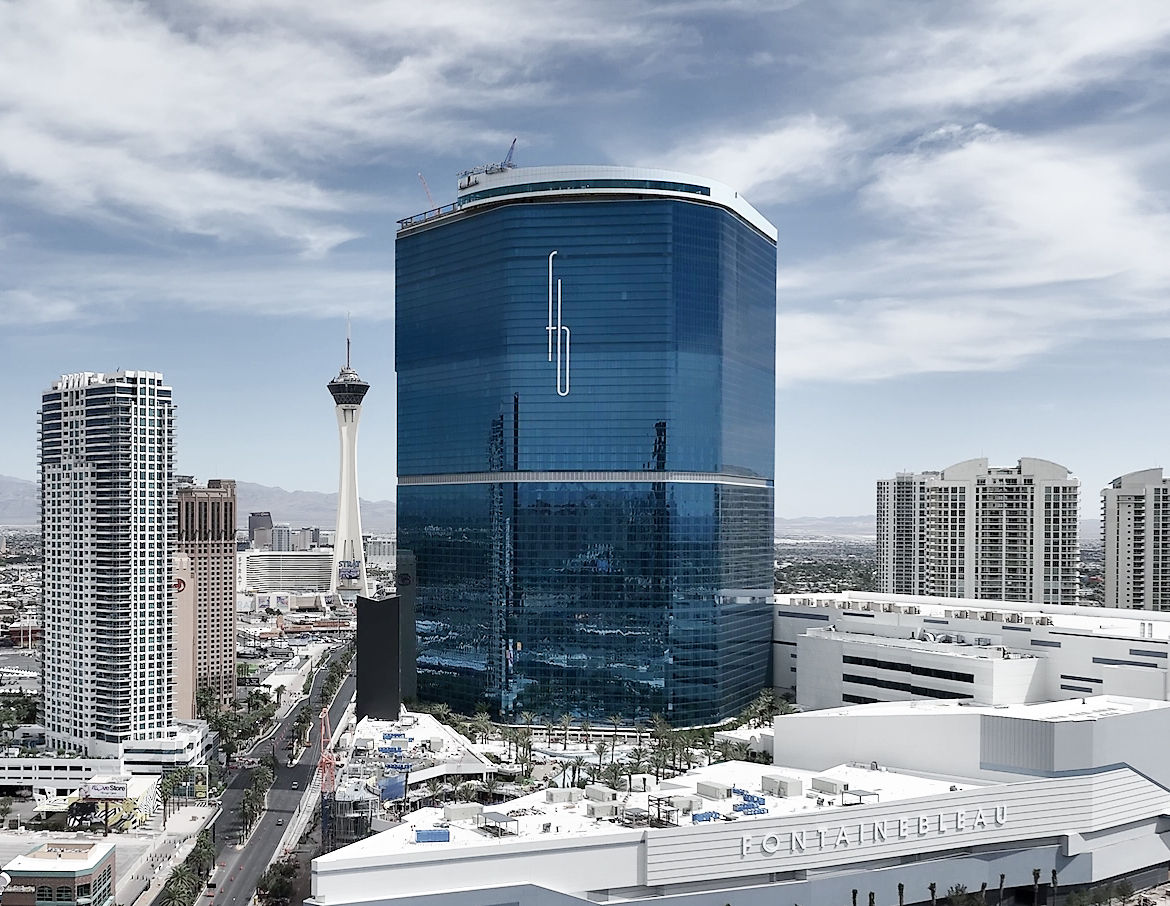The Fontainebleau Las Vegas is a Contemporary skyscraper designed by Carlos Zapata Studio, in association with Bergman, Walls & Associates, Ltd., and built between 2007 and 2023, for a reported $3.70 billion dollars, in Winchester, NV.
Fontainebleau Las Vegas is not the only name you might know this building by though. Between 2018 and 2021 it was also known as The Drew Las Vegas.
Its precise street address is 2755 Las Vegas Boulevard South, Winchester, NV. You can also find it on the map here.
Construction began in mid-2007. By the end of 2008, the tower had been topped out, but by mid-2009, work was halted due to financial problems.
Construction resumed in February 2018 but was once again suspended in March 2020 due to the COVID-19 pandemic. It resumed in November 2021 and was finally inaugurated in December 2023..


